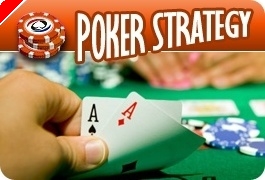The 'Other' Games of Poker: Badugi

On my first trip through the high limit cash game area at this summer's World Series of Poker, I noticed that in addition to some of the more typical mixed-game acronyms like H.O.R.S.E., H.O.S.E. and even H.O.E., the list manager was calling out names for $100-200 and $400-800 B.T. Names like "Greg R.," "Gabe K.," and "Chad B." After racking my brain for a few minutes over what on earth B.T. could stand for, I finally sidled up to the podium and asked.
"B.T.? That's badugi and triple draw. Sometimes they play B.O.T. with a round of Omaha 8-or-better in the middle."
According to that floorman, adding badugi into the high-limit mixed side games was all the rage at this year's WSOP. Badugi is also a natural companion to triple draw, as both are lowball games, both are played with three draws, and both are an action junkie's dream come true with their enormous pots and heavy variance. Rumor has it that Greg Raymer is so infatuated with the game that he went so far as to invent a 17-card Chinese poker variant that incorporates a badugi hand.
Rules
So what is badugi anyway? It's a four card form of triple draw lowball where the best hand is not only the lowest hand, but one that contains all four different suits. An A-2-3-4 rainbow is the best hand possible in badugi. Played with a button, a small blind, and a big blind, each player is dealt four down cards to start. There are four betting rounds, one after the deal, and one after each of the three draws. Like deuce-to-seven triple draw, badugi is a naturally shorthanded game due to all the discards�C only six players maximum can be dealt in at any time. Primarily spread live in a two-tiered limit structure ($3-6, $10-20, $100-200, etc.) there are also some wild half pot-limit badugi games to be found online at Doyle's Room. With the maximum bet capped at half the size of the current pot, players tend to have good odds (or are easily able to convince themselves that they do) to keep drawing in multi-way pots. The result is some insane action�C pots in the $1-2 half pot-limit game at Doyle's Room frequently run over $200.
Making a "badugi"�C a rainbow hand with one card from each suit is your #1 objective in this game. Any badugi, regardless of the hand's low value, beats a hand with more than one card from the same suit. Any suitedness takes away value from a hand. For example, Ah-Jc-Qd-Ks would win over Ad-2h-3h-4s in a showdown. Though at first glance it seems like the Ad-2h-3h-4s is much the better lowball hand, the fact that it contains two hearts means that in actuality, only three cards from that hand will play at all (Ad-2h-4s). When your final hand contains two cards of the same suit, the lower card plays, like the 2h did here and the higher one (the 3h in this example) is counterfeited. Pairs also take away value in Badugi. If, after the third draw you're stuck with the Ad-3h-6c-6s, you'll end up only playing the A-3-6.
A badugi beats any three-card hand and a three card hand beats any two card hand. What? There are two card hands?! Those unfortunate to end up with something like the 2h-3h-3d-4d would be looking at a two card hand. Only the 2h-3d would play in this particular situation, due to the presence of not only a pair, but double-suitedness. 2h-3h-4c-5c would also make a two card hand, with the 2h-3d playing and the 3h-4d counterfeiting.
Basic Strategy and Starting Hands
Needless to say, in badugi a paired, double-suited hand belongs in the muck after the first deal. In terms of starting hands, you're looking for three unsuited cards to a 7-low, two unsuited cards to a 5-low or any badugi to consider entering a pot. Unlike deuce-to-seven triple draw, badugi is not a game of the nuts. A player will only very rarely make nut hands like the A-2-3-4 badugi. More often than not, on a full 6-handed table, a 7 or 8-low badugi rates to be a pretty strong hand. Always keep an eye on how shorthanded your game is�C the fewer players at the table, the more you can loosen your starting hand requirements, and the less likely it will be that you'll end up against a badugi at showdown.
The top ten badugi hands are as follows (all unsuited):
A-2-3-4
A-2-3-5
A-2-4-5
A-3-4-5
2-3-4-5
A-2-3-6
A-2-4-6
A-3-4-6
2-3-4-6
A-2-5-6
Let me warn you, however. Making a badugi isn't the easiest thing to do. Even if you're dealt the mother of all drawing hands�C A-2-3-x unsuited, you'll still only hit a badugi 47% of the time after three draws. Playing huge draws like this and losing to random, unsuited high cards can get incredibly frustrating after a while!
Most players experimenting at low limit badugi frankly have no clue what they are doing, and this game can be a great money-maker for even reasonably skilled players with some good poker instincts. If you're a fan of razz or triple draw, badugi is a logical next step for you. Keep your tilt-meter in check and give the games on Doyle's Room a whirl. I promise you'll never look at suited cards the same way again.








